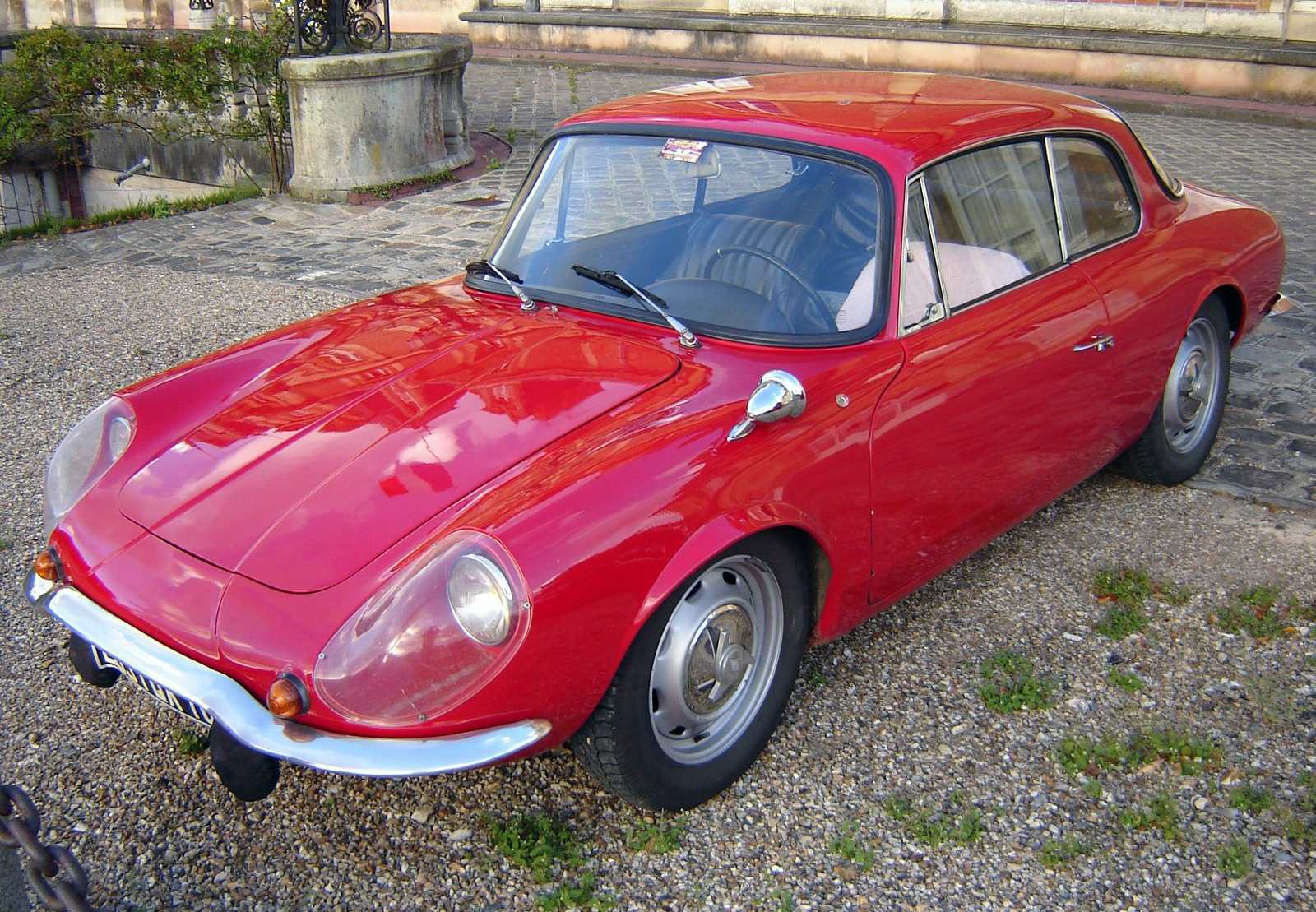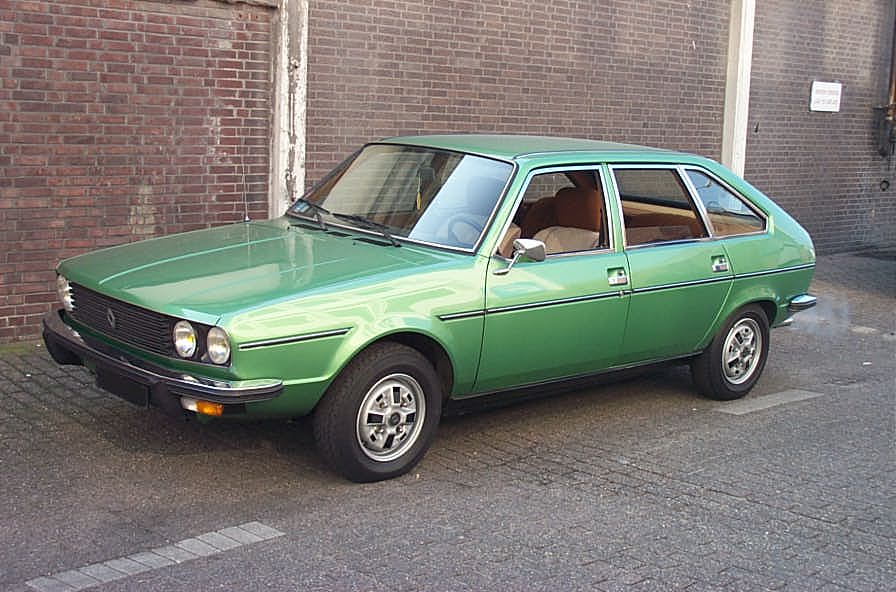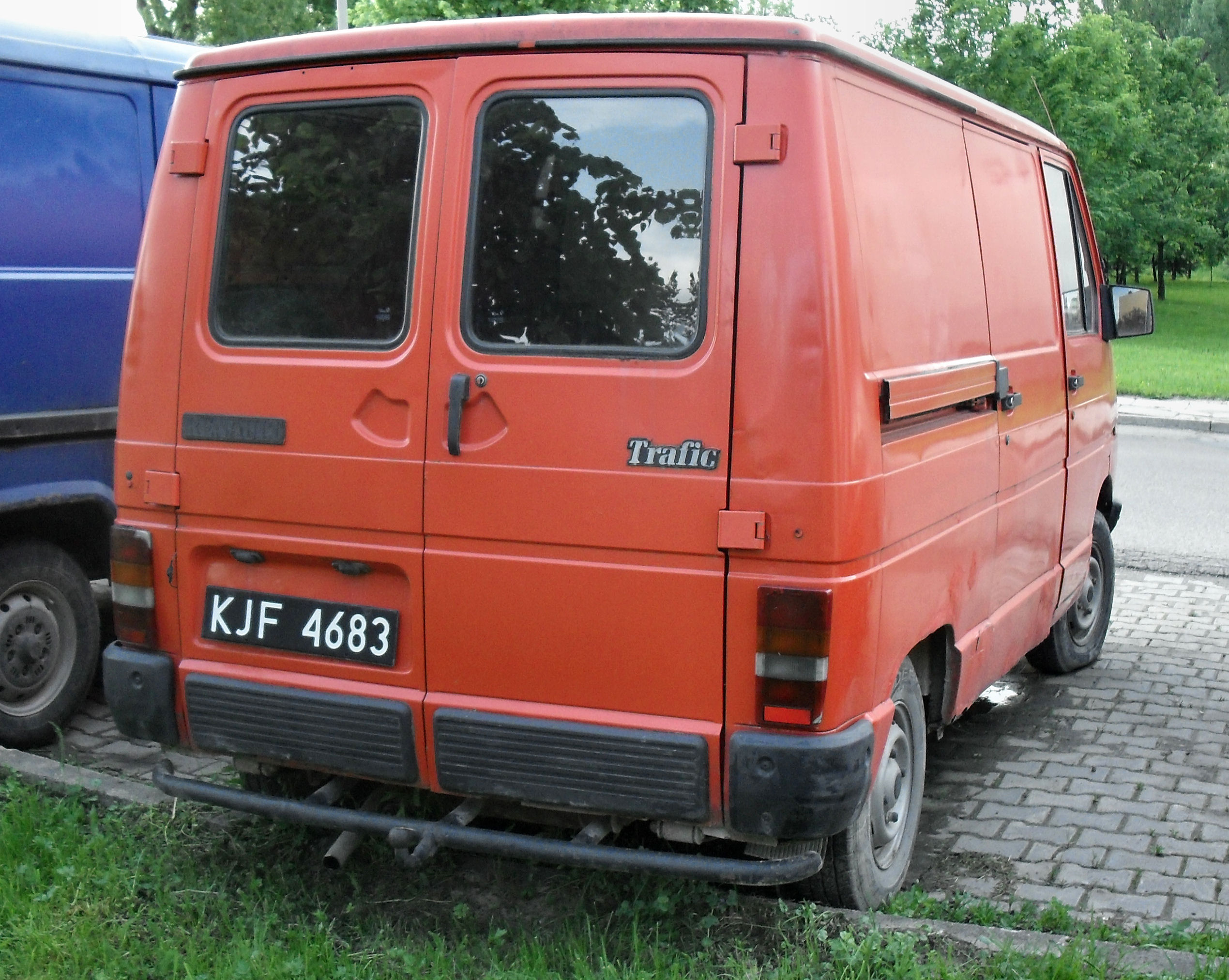|
Renault Cléon-Alu Engine
The Cléon-Alu engine, also known under the code "A engine" or "A-Type" (A for aluminium) is an automotive gasoline internal combustion engine, developed and produced by Renault in 1960. A four-stroke inline four-cylinder design with aluminium-alloy block and cylinder head, it was water cooled, with a five main bearing crankshaft and a side-mounted chain-driven camshaft operating eight overhead valves via pushrods and rockers. It made its debut appearance on the Renault 16. AxK The AxK displaces from a bore and stroke of . Applications: * A1K ** Renault 16 ** 1967–1970 Lotus Europa S1 and S2 (types 46 and 54) AxL The AxL displaces 1.6 L, from either , , or . All of these variants share an stroke, with bores of . Applications: * A2L ** 1968–1980 Renault 16 ** 1971–1976 Renault 15 TS ** 1972–1976 Renault 17 TL ** 1970–1973 Renault 12 Gordini ** 1972–1974 Renault 12 Gordini ** 1973–1975 Alpine A110 1600 S ** 1971–197 ... [...More Info...] [...Related Items...] OR: [Wikipedia] [Google] [Baidu] |
Alpine A110
The Alpine A110 is a sports car produced by French automobile manufacturer Alpine from 1963 to 1977. The car was styled as a " berlinette", which in the post-WWII era refers to a small enclosed two-door berline, better-known as a coupé. The Alpine A110 succeeded the earlier A108. The car was powered by a succession of Renault engines. A car also named Alpine A110 was introduced in 2017. History Launched in 1963, the A110, like previous road-going Alpines, used many Renault parts, including engines. While its predecessor the A108 was designed around Dauphine components, the A110 was updated to use R8 parts. Unlike the A108, which was available first as a cabriolet and only later as a coupé, the A110 was available first as a berlinette and then as a cabriolet. The most obvious external departure from the A108 coupé was a restyling of the rear bodywork. Done to accommodate the A110's larger engine, this change gave the car a more aggressive look. Like the A108, the A11 ... [...More Info...] [...Related Items...] OR: [Wikipedia] [Google] [Baidu] |
Aluminium Alloy
An aluminium alloy (or aluminum alloy; see spelling differences) is an alloy in which aluminium (Al) is the predominant metal. The typical alloying elements are copper, magnesium, manganese, silicon, tin, nickel and zinc. There are two principal classifications, namely casting alloys and wrought alloys, both of which are further subdivided into the categories heat-treatable and non-heat-treatable. About 85% of aluminium is used for wrought products, for example rolled plate, foils and extrusions. Cast aluminium alloys yield cost-effective products due to the low melting point, although they generally have lower tensile strengths than wrought alloys. The most important cast aluminium alloy system is Al–Si, where the high levels of silicon (4–13%) contribute to give good casting characteristics. Aluminium alloys are widely used in engineering structures and components where light weight or corrosion resistance is required.I. J. Polmear, ''Light Alloys'', Arnold, 1995 Allo ... [...More Info...] [...Related Items...] OR: [Wikipedia] [Google] [Baidu] |
Rocker Arm
In the context of an internal combustion engine, a rocker arm is a valvetrain component that typically transfers the motion of a pushrod to the corresponding intake/exhaust valve. Rocker arms in automobiles are typically made from stamped steel, or aluminum in higher-revving applications. Some rocker arms (called ''roller rockers'') include a bearing at the contact point, to reduce wear and friction at the contact point. Overview In the typical use-case of an overhead valve (pushrod) engine, the camshaft at the bottom of the engine pushes the pushrod upwards. The top of the pushrod presses upwards on one side of the rocker arm (located at the top of the engine), which causes the rocker arm to rotate. This rotation causes the other end of the rocker arm to press downwards on the top of the valve, which opens the valve by moving it downwards. A ''roller rocker'' is a rocker arm that uses needle bearings (or a single bearing ball in older engines) at the contact point between th ... [...More Info...] [...Related Items...] OR: [Wikipedia] [Google] [Baidu] |
Renault 20
The Renault 20 ''(R20)'' and Renault 30 ''(R30)'' are two executive cars produced by the France, French automaker Renault between 1975 and 1984. The most upmarket and expensive Renaults of their time, the two cars were almost identical with regard to sheet metal and mechanicals; the R30 was the larger-engined and more expensive of the two. The two cars were easily distinguished between each other from their differing headlight configuration – the Renault 20 had two single rectangular headlights, whereas the Renault 30 had quadruple round headlights. The interior specifications differed substantially, however, with the Renault 30 having a higher specification in all models. Over 622,000 R20s and 145,000 R30s were produced in Sandouville near Le Havre, France. The 20 variant won 1978 ''What Car?'' "Car of the Year". The Renault 30 variant had a reputation for heavy depreciation. ''Motorists Guide'' reported the cost of a brand new 30 TX Automatic as £11,950 in ... [...More Info...] [...Related Items...] OR: [Wikipedia] [Google] [Baidu] |
Renault Trafic
The Renault Trafic (pronounced as "traffic") is a light commercial van produced by the French automaker Renault since 1980. It is also marketed as the Fiat Talento, the Nissan NV300, the Nissan Primastar, the Mitsubishi Express and, until the model year of 2018, as the Opel/Vauxhall Vivaro (previously, Opel/Vauxhall Arena), competing with the Citroën Jumpy, Fiat 900T, Fiat Talento, Fiat Scudo, Ford Transit, Ford Transit Custom, Hyundai H-1, Kia Pregio, Mercedes-Benz Vito, GAZ Sobol, Peugeot Expert, Toyota ProAce, Toyota Hiace, Volkswagen Transporter, and the Nissan Vanette (first series). Previous versions of the Renault Trafic have been sold under Inokom, Chevrolet and Tata badges. The third generation Vauxhall Vivaro was produced in GM Manufacturing Luton plant starting in 2013. However, following the takeover of Opel/Vauxhall by Groupe PSA, the Trafic-based Vivaro went out of production in 2018, and was replaced by the next generation Vivaro based on the Ci ... [...More Info...] [...Related Items...] OR: [Wikipedia] [Google] [Baidu] |
Renault R18
The Renault 18 is a large family car produced by French manufacturer Renault between 1978 and 1989, with South American production continuing until 1994. It formed the basis for the closely related Renault Fuego Coupé, with which it shared its floorpan and drivetrain, but with the Fuego initially using the negative offset type front suspension from the larger Renault 20/30, which became standardized across the 18 range from the 1983 model year onwards. Development The Renault 18 was intended as a replacement for the Renault 12, which, having been in production since 1969, was beginning to show its age by the late 1970s, though the 12 was kept in production alongside the 18 until 1980. Unlike the earlier car, the 18 was designed quickly; the time between its initial conception and its actual launch date was only eighteen months, primarily due to the fact that the 18 was based upon the 12's underpinnings. Production peaked early: 1979 was the R18's biggest year, after which sales ... [...More Info...] [...Related Items...] OR: [Wikipedia] [Google] [Baidu] |
Renault Fuego
The Renault Fuego (''Fire'' in Spanish) is a sport hatchback that was manufactured and marketed by Renault from 1980 to 1986, replacing the Renault 15 and 17 coupés of the 1970s. Marketed in the United States by American Motors Corporation (AMC), the Fuego was also assembled in several countries in South America, where production continued until 1992. According to Renault, 265,367 Fuegos were produced, 85% of those manufactured in France from February 1980 to October 1985. Spanish production for European markets continued into 1986. Design The Fuego's exterior was styled by Michel Jardin, and the interior by Francois Lampreia, both working under direction of Robert Opron. Noted automotive journalist, L. J. K. Setright said the Fuego "is blessed with a body which is not only roomy and aerodynamically efficient, but is also beautiful". The Fuego was heavily based on the Renault 18, sharing its floorpan and drivetrain, with its front suspension developed from the larger R ... [...More Info...] [...Related Items...] OR: [Wikipedia] [Google] [Baidu] |
Renault 18
The Renault 18 is a large family car produced by French manufacturer Renault between 1978 and 1989, with South American production continuing until 1994. It formed the basis for the closely related Renault Fuego Coupé, with which it shared its floorpan and drivetrain, but with the Fuego initially using the negative offset type front suspension from the larger Renault 20/30, which became standardized across the 18 range from the 1983 model year onwards. Development The Renault 18 was intended as a replacement for the Renault 12, which, having been in production since 1969, was beginning to show its age by the late 1970s, though the 12 was kept in production alongside the 18 until 1980. Unlike the earlier car, the 18 was designed quickly; the time between its initial conception and its actual launch date was only eighteen months, primarily due to the fact that the 18 was based upon the 12's underpinnings. Production peaked early: 1979 was the R18's biggest year, after which sales ... [...More Info...] [...Related Items...] OR: [Wikipedia] [Google] [Baidu] |
Alpine A310
The Alpine A310 is a sports car built by French manufacturer Alpine, from 1971 to 1984. __TOC__ History Dieppe-based Alpine, once an independent company specialising in faster Renaults, later a Renault subsidiary, established a fine competition history with the Alpine A110 winning the 1973 Monte Carlo Rally and World Rally Championship. The successor was the Alpine A310, initially powered by tuned 17TS/Gordini four-cylinder engine, still rear-mounted. The maximum power reaches , thanks to the use of two twin-barrel 45 DCOE Weber carburetors. The first model of the A310, built 1971-1976, was a car with a four-cylinder engine and six headlights. Being larger, heavier, and no more powerful than its predecessor, the A310 was generally considered underpowered. The car was first shown at the 1971 Geneva Motor Show. The prototype A310 had louvres across the rear windscreen; these were not carried over to the production model. Early models had a NACA duct mounted near the window at ... [...More Info...] [...Related Items...] OR: [Wikipedia] [Google] [Baidu] |
Renault 12
}), the other is the submodel designation TS. Sold as a sedan or a station wagon (TSW), it has a 1.4 litre carburetted C1J (Cléon) engine with and came with either a four- or a five-speed transmission. Australia The Renault 12 won Australia's Wheels magazine's Car of the Year award in 1970. It was built at Renault Australia's assembly plant in the Melbourne suburb of Heidelberg from CKD kits. Various components such as seats were sourced locally. The Australian range generally followed the UK models, including the facelift (which arrived in 1976) but, from about 1971, when new Australian Design Rules were introduced, had to have a special local wiper mechanism with a conventional right hand drive pattern (parking on the passenger side). This also affected locally assembled Peugeot 504 and Triumph 2.5 models. By the mid-1970s, local parts content had increased to represent about fifty percent. In October 1976 the 1,289 cc engine was replaced by a larger capacity 1,397&nb ... [...More Info...] [...Related Items...] OR: [Wikipedia] [Google] [Baidu] |
Renault 17
Seventeen or 17 may refer to: * 17 (number), the natural number following 16 and preceding 18 * one of the years 17 BC, AD 17, 1917, 2017 Literature Magazines * ''Seventeen'' (American magazine), an American magazine * ''Seventeen'' (Japanese magazine), a Japanese magazine Novels * ''Seventeen'' (Tarkington novel), a 1916 novel by Booth Tarkington *''Seventeen'' (''Sebuntiin''), a 1961 novel by Kenzaburō Ōe * ''Seventeen'' (Serafin novel), a 2004 novel by Shan Serafin Stage and screen Film * ''Seventeen'' (1916 film), an American silent comedy film *''Number Seventeen'', a 1932 film directed by Alfred Hitchcock * ''Seventeen'' (1940 film), an American comedy film *'' Eric Soya's '17''' (Danish: ''Sytten''), a 1965 Danish comedy film * ''Seventeen'' (1985 film), a documentary film * ''17 Again'' (film), a 2009 film whose working title was ''17'' * ''Seventeen'' (2019 film), a Spanish drama film Television * ''Seventeen'' (TV drama), a 1994 UK dramatic short starring Christ ... [...More Info...] [...Related Items...] OR: [Wikipedia] [Google] [Baidu] |
Renault 15
The Renault 15 and Renault 17 are two variations of the same coupé designed and built by French automaker Renault between July 1971 and August 1979. The R17 was sold as R177 in Italy, respecting the heptadecaphobia superstition. They were effectively coupé versions of the Renault 12. The main differences between the two cars were their headlight configuration (the 15 had two rectangular headlights whereas the 17 had four round headlights) and their rear side windows. Some markets show the 17 with the rectangular lights for TL versions. The Renault 15 and 17 were presented at the Paris Motor Show in October 1971. Underpinnings The chassis and most of the running gear came from the Renault 12, while the 1565 cc A-Type engine in the more powerful R17 TS and R17 Gordini models was derived from the engine in the Renault 16 TS. Though the mechanicals of the cars were derived from other Renaults, the body was completely new. Chronology At the 1974 Paris Motor Show, the ... [...More Info...] [...Related Items...] OR: [Wikipedia] [Google] [Baidu] |




_en_Espagne.jpg)


